Thịt Kho Tàu (Vietnamese Caramelized Pork and Eggs)
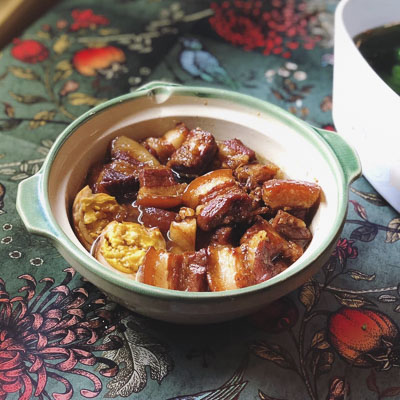
Ingredients
-
500 g pork belly or pork leg
-
5 boiled duck eggs
-
400 ml fresh coconut water
-
1 tbsp minced shallots
-
1 tbsp minced garlic
-
3 tbsp fish sauce
Basic seasonings:
-
Sugar
-
Pork seasoning powder (or chicken bouillon)
-
Ground black pepper
How to Choose Fresh Pork
- First, look for pork that has a light pink or pale red color. When cut, the meat should appear light pink with a slight sheen, and the fat should be bright white and firm.
- To avoid meat that is too greasy or too dry, choose cuts with a balanced ratio of lean meat to fat.
- Good-quality pork that hasn’t been raised with lean-meat additives will have a firm texture, with fat and meat closely bonded together — not loose or wobbly when held.
- Avoid pork that smells sour or unpleasant, or feels mushy and lacks elasticity when pressed — signs that the meat is no longer fresh.
How to Choose Fresh Eggs
- Fresh eggs usually have a slight pink hue and are covered with a thin white powdery film. They feel firm and heavy in the hand. Avoid eggs with dull shells or any off-putting odor.
- To test freshness, candle the egg: a fresh egg will appear clear pink with a small dot in the center, and the air cell inside will be less than 1 cm in diameter with a fixed boundary. In contrast, older eggs may show red lines, larger air cells (over 1.5 cm), or a cloudy, uneven appearance.
- You can also test by placing the egg in a 10% saltwater solution: eggs less than 5 days old will sink to the bottom. If the egg floats, it’s likely too old to use.
- Avoid eggs that slosh or make a watery sound when shaken — this indicates the egg has aged and lost freshness.
Nutritional Information
For: Meat-eater
Calories per serving: ~500–600 kcal (tùy phần mỡ và trứng)
Key Nutrients:
1. Protein
Sources: Pork, duck eggs
Benefits: Builds muscle, supports tissue repair
2. Fat
Sources: Pork belly, egg yolk
Benefits: Provides energy, supports hormone production
(⚠️ High in saturated fat — best enjoyed in moderation)
3. Iron
Sources: Pork, eggs
Benefits: Prevents anemia, supports oxygen transport
4. Vitamin B12
Sources: Pork, eggs
Benefits: Supports nerve function, red blood cell production
5. Sodium
Sources: Fish sauce, seasoning
Note: Can be high — balance with low-sodium meals
1. Marinate the Pork
Rinse pork belly or pork leg meat with salt water, then drain and cut into bite-sized chunks. Choose cuts with thin skin for faster cooking and a less greasy result.
Place the pork in a large bowl and season with:
-
1 tbsp minced shallots
-
1 tbsp minced garlic
-
3 tbsp fish sauce
-
2 tbsp sugar
-
⅓ tbsp seasoning powder
-
1 tsp ground pepper
Mix well, cover the bowl with plastic wrap, and marinate for at least 1 hour to let the flavors soak in.
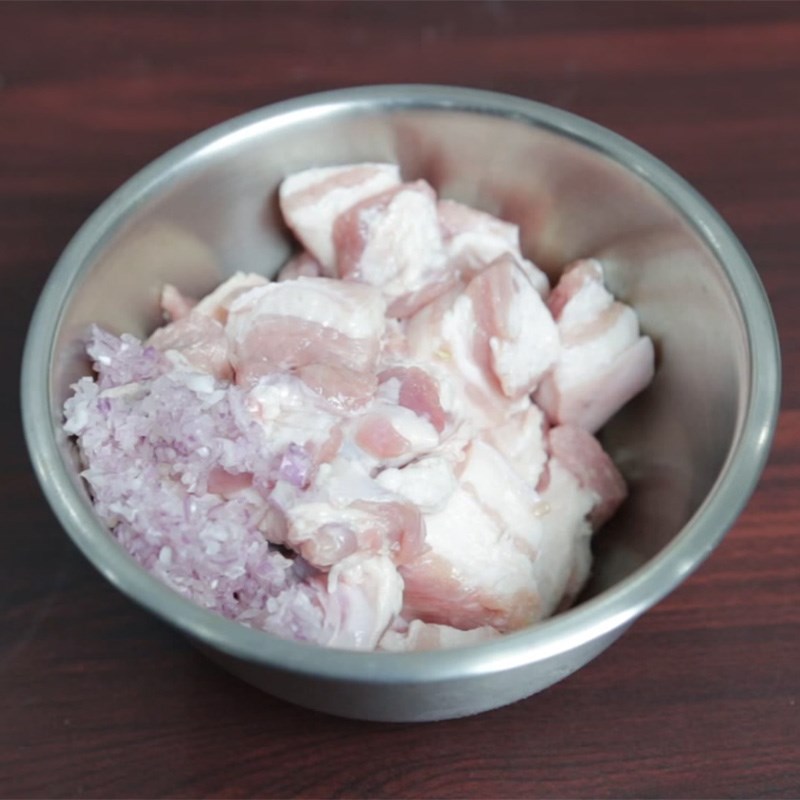
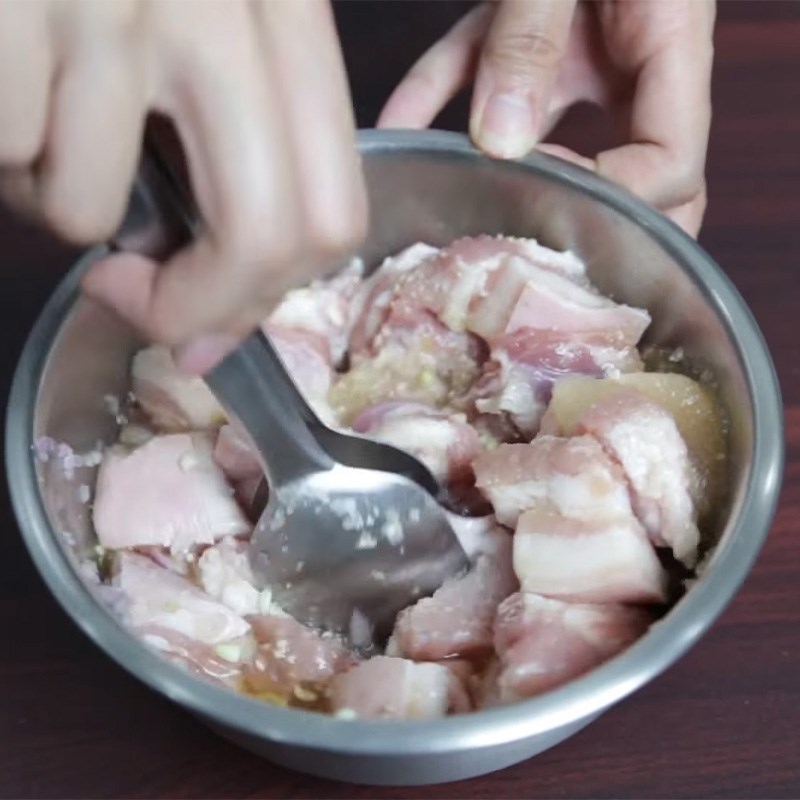
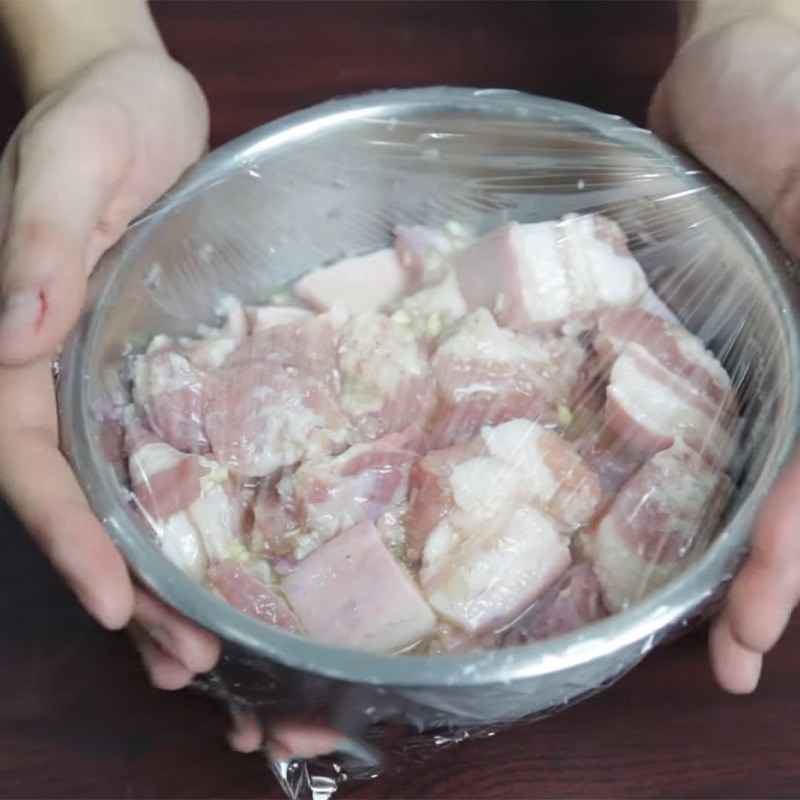
2. Make the Caramel Sauce (Nước màu)
In a pot over medium heat, add 1 tsp sugar. Stir constantly until the sugar melts and turns a rich amber-brown color (similar to dark honey).
Turn off the heat and let the caramel cool slightly — it will darken further. Then add ½ a small bowl of water to dilute it.
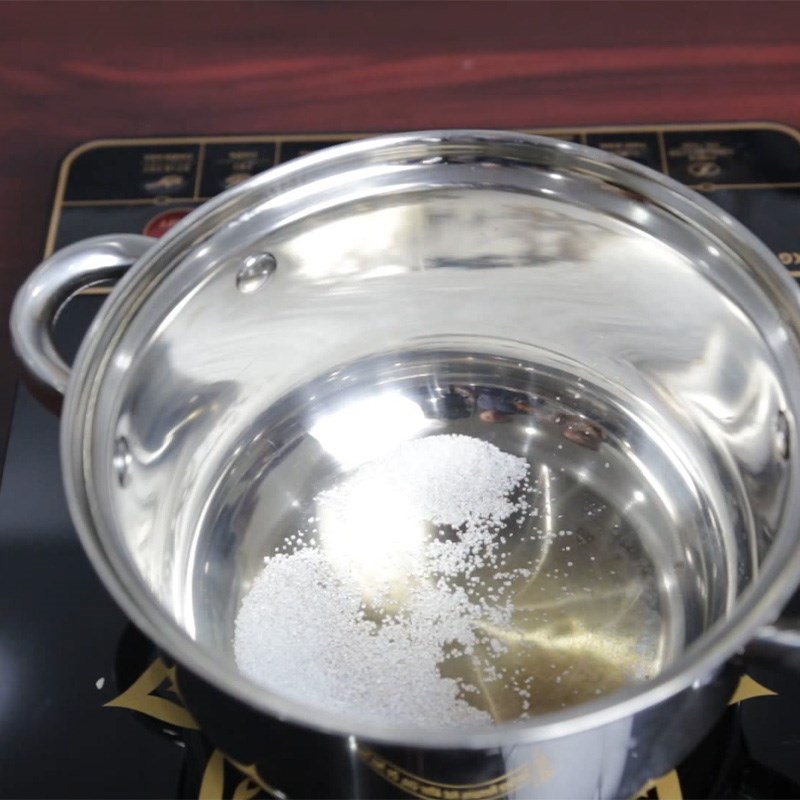
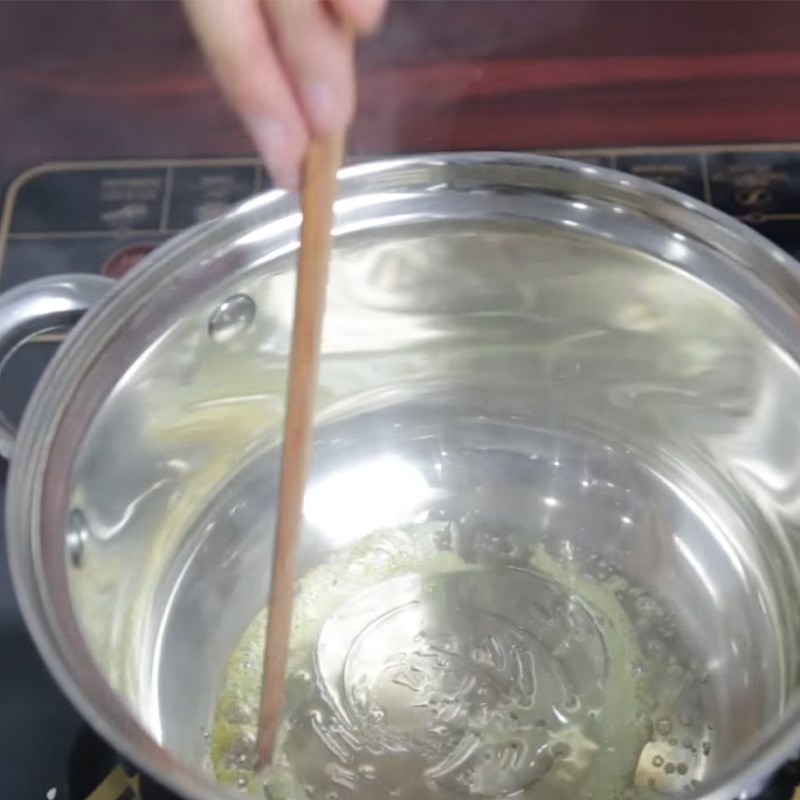

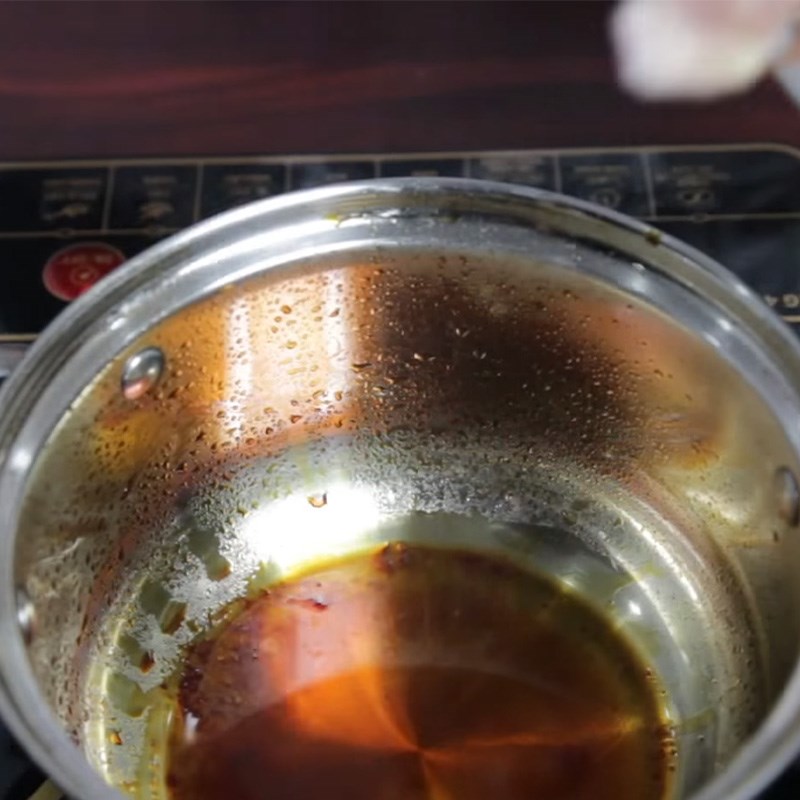
3. Braise the Pork
Add the marinated pork into the caramel pot. Sear over high heat, stirring until the meat is browned on all sides.
Pour in 400ml of coconut water, cover, and simmer on low heat for 30 minutes.
Then, add 5 peeled boiled duck eggs. If the liquid is low, top up with a bit more coconut water or water. Continue to cook for another 30 minutes, until the pork becomes tender and richly infused with flavor.
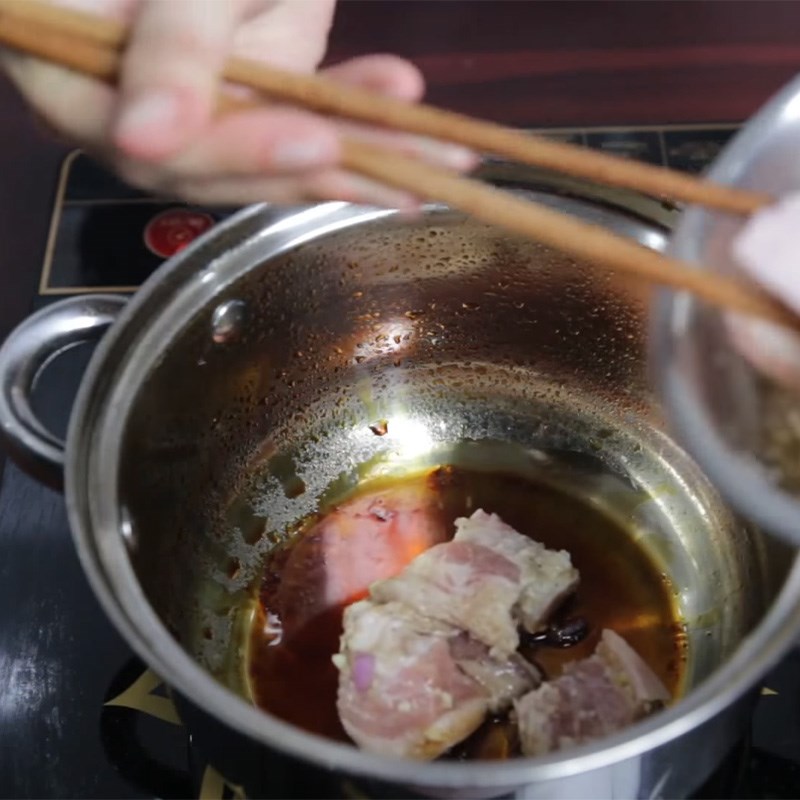
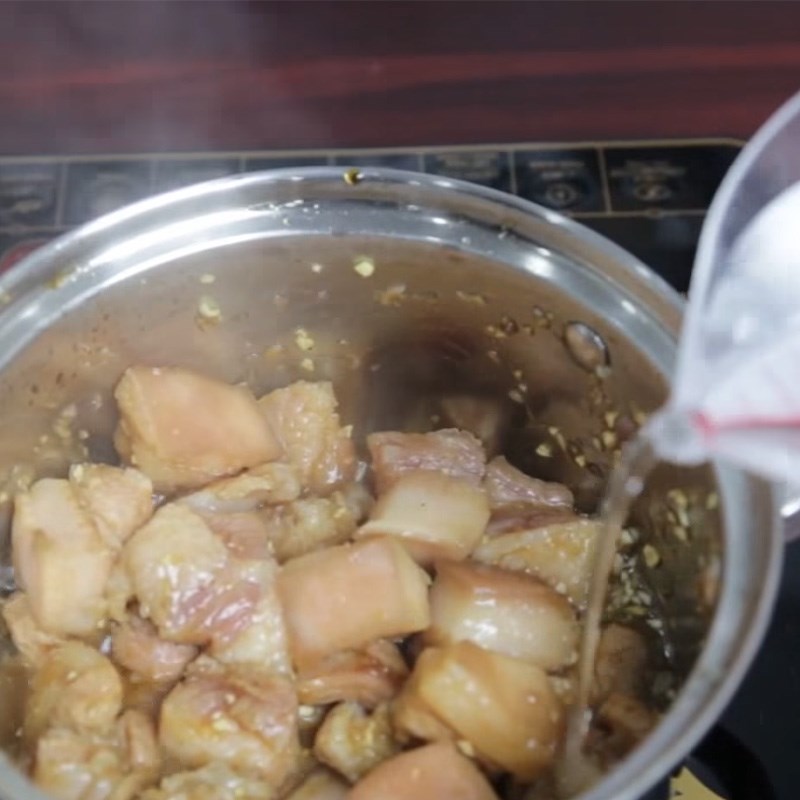
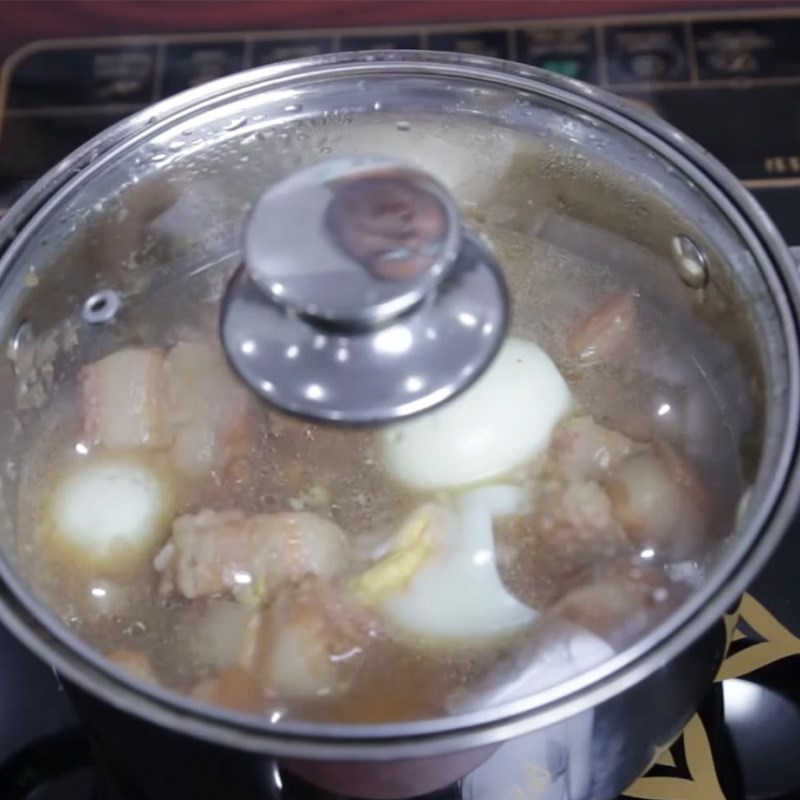

4. Final Dish
Your Vietnamese caramelized pork and eggs is now ready to serve hot. The dish should have a beautiful deep amber color, savory aroma, and melt-in-your-mouth texture.
The pork is tender with a hint of sweetness from the coconut water, while the eggs are flavorful and slightly creamy — perfect with steamed rice.
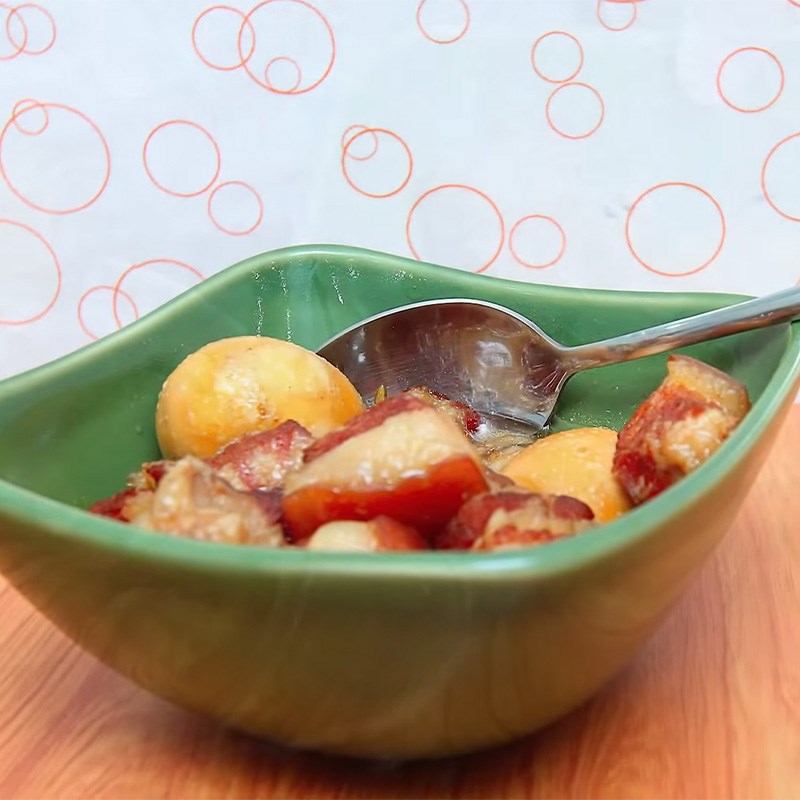
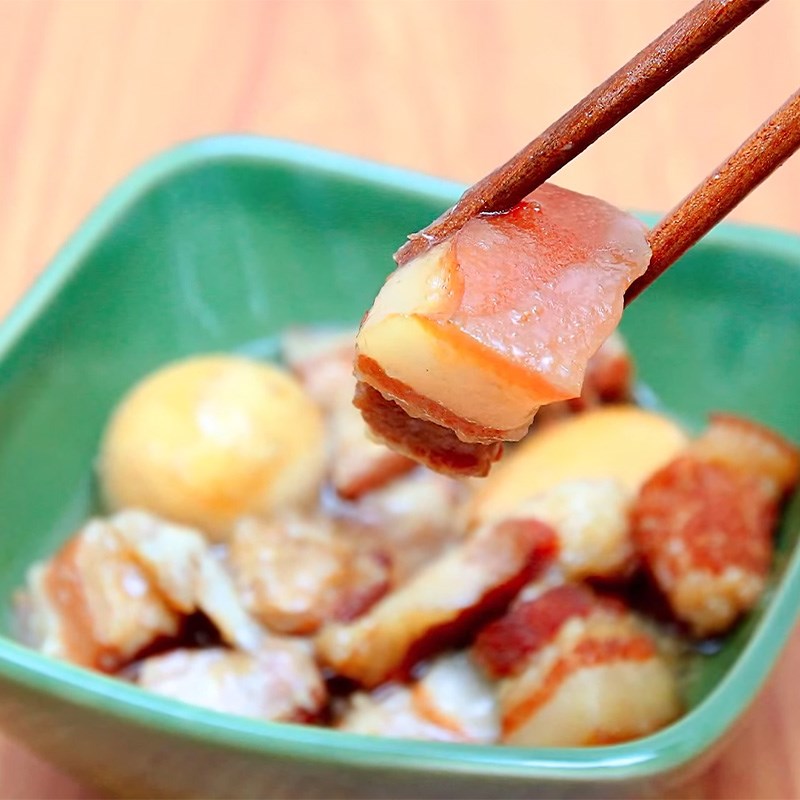
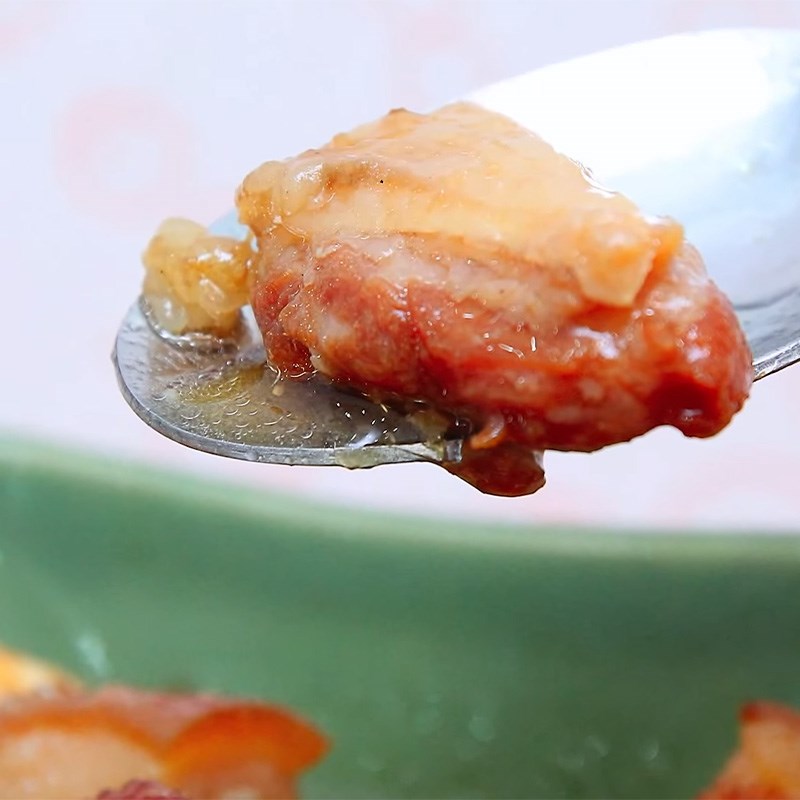
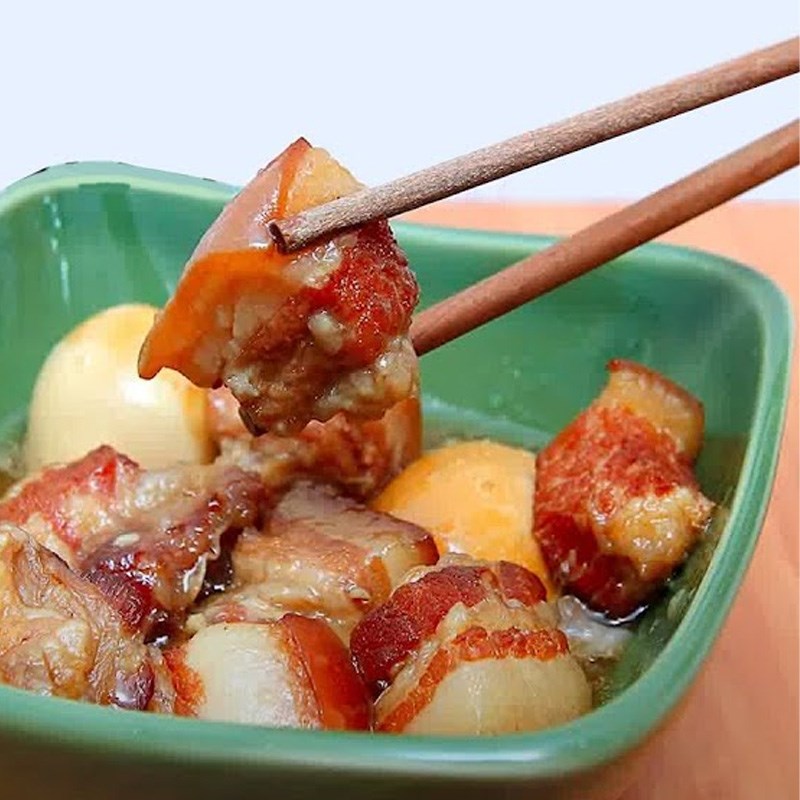
Thịt Kho Tàu– A Southern Vietnamese Lunar New Year Staple
Thịt kho Tàu, or Vietnamese caramelized pork belly with eggs, is more than just comfort food — it is a symbol of family, prosperity, and tradition in Southern Vietnam. The dish is especially popular during Tết, the Vietnamese Lunar New Year, when large pots of braised pork are prepared in advance to welcome abundance and togetherness.
Despite the name “Tàu”, which literally means “Chinese”, the dish is uniquely Vietnamese. Scholars believe the term reflects a local Southern accent rather than any direct Chinese influence — “kho Tàu” actually refers to the style of braising in coconut water, a common practice in the Mekong Delta region.
The slow-cooked pork and eggs, steeped in a rich, amber-colored sauce made from caramelized sugar and coconut juice, represent yin-yang balance: the soft eggs and tender meat, the salty and sweet flavors, the warmth of family in the first days of the new year.
Today, thịt kho Tàu remains a quintessential home-cooked dish, treasured across generations — not only during the holidays, but anytime we crave the taste of home.

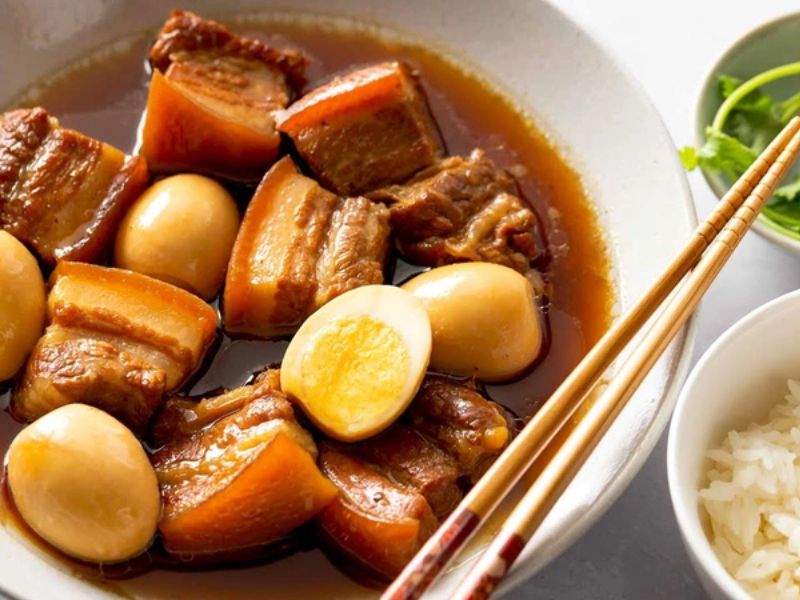
(Familiar dishes on Vietnamese family dinner tables)